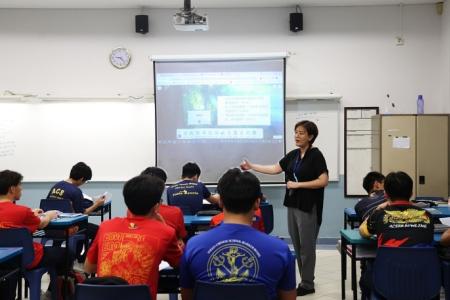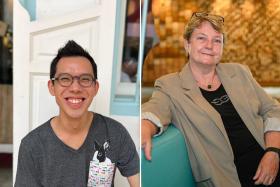Higher mother tongue for more students from 2026
More students will be allowed to study their mother tongue languages (MTLs) – Chinese, Malay or Tamil – at a higher level in secondary schools as part of a raft of efforts set to kick in over the next few years to shore up bilingual education.
From 2026, pupils who do well in the subject in the Primary School Leaving Examination (PSLE) will be able to take higher mother tongue languages (HMTLs) in Secondary 1, regardless of their overall PSLE score.
These are pupils who score AL1 or AL2 – the two highest possible scores – in their mother tongue, or a distinction or merit in HMTL in the PSLE.
This is a change from the current system, where pupils must do well across all four subjects – English, maths, science and mother tongue – in the PSLE to qualify to study HMTL in secondary school.
Giving more details about the initiatives at the Mother Tongue Language Symposium on Sept 14, Education Minister Chan Chun Sing said English proficiency is necessary, but is on its own not sufficient for Singapore’s society.
Given its importance and benefits to Singapore, more has to be done to preserve bilingualism, he said, and challenges line the road ahead for Singaporeans, particularly young people, in gaining proficiency in their mother tongues.
To tackle this, the Ministry of Education (MOE) will also increase efforts to expose students to mother tongue languages earlier in life, he told educators and parents at the symposium at the Suntec Singapore Convention and Exhibition Centre.
At the primary level, a new structured reading programme will be introduced in 2025, where Primary 1 and 2 pupils will have 30 minutes of their mother tongue curriculum time set aside weekly for reading and library activities.
Known as MTL Soar, it will be rolled out progressively to all levels in primary schools by 2029, MOE said in a statement on Sept 14.
“We will provide graded readers for students across genres and topics that are exciting to young children. This will complement the existing curriculum and textbooks, so that students can apply and extend what they have learnt in the classroom,” Mr Chan said. Graded readers are books that have been simplified so they are easy to understand.
“The programme will also cater to different types of learners. Those who are stronger in MTL... can read more books that are richer in content and be stretched in their learning, while those who need more support will have books that are more accessible for them.”
For younger children, MOE will increase exposure to mother tongue languages in kindergartens.
Under a pilot programme in two MOE kindergartens – MK@Hougang and MK@Elias Park – the daily curriculum time dedicated to mother tongue languages will increase from one hour to 1½ hours from 2025, Mr Chan said.
MOE said the pilot, previously reported in February, will gradually be scaled up to more MOE kindergartens.
More efforts must be made to take the use of mother tongue languages out of the classroom, and to leverage technology such as artificial intelligence to improve language learning, Mr Chan said.
“Our mother tongue languages anchor us to our heritage. They also offer us an edge, a competitive advantage, by allowing us to connect with people who speak the same language, as well as tapping into wider opportunities in the region,” he said.
He added that in multi-ethnic and multilingual Singapore, bilingualism is a cornerstone of the education system and remains a fundamental pillar of the country’s national identity.
The announcements on Sept 14 elaborate on a thrust to improve mother tongue language learning first outlined by Prime Minister Lawrence Wong in his maiden National Day Rally speech in August, where he emphasised continued government support for bilingualism.
Then, he noted that the Chinese community was very concerned about the state of the language in Singapore, adding that many Singaporeans, including himself, speak English at home.
Efforts have been made over the years to address this issue through the education system.
Primary 3 and 4 pupils can now take Higher Chinese in several schools that are not in the Special Assistance Plan – a programme to develop bilingual students with traditional Chinese values – a move that has resulted in more primary school pupils taking the subject.
MOE has also offered Higher Malay Language and Higher Tamil Language to Primary 3 pupils since 2022, and to Primary 4 pupils since 2023.
Get The New Paper on your phone with the free TNP app. Download from the Apple App Store or Google Play Store now


